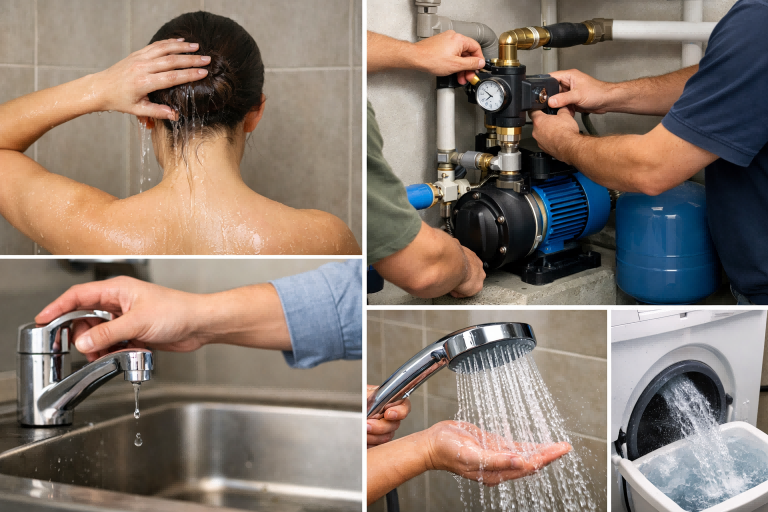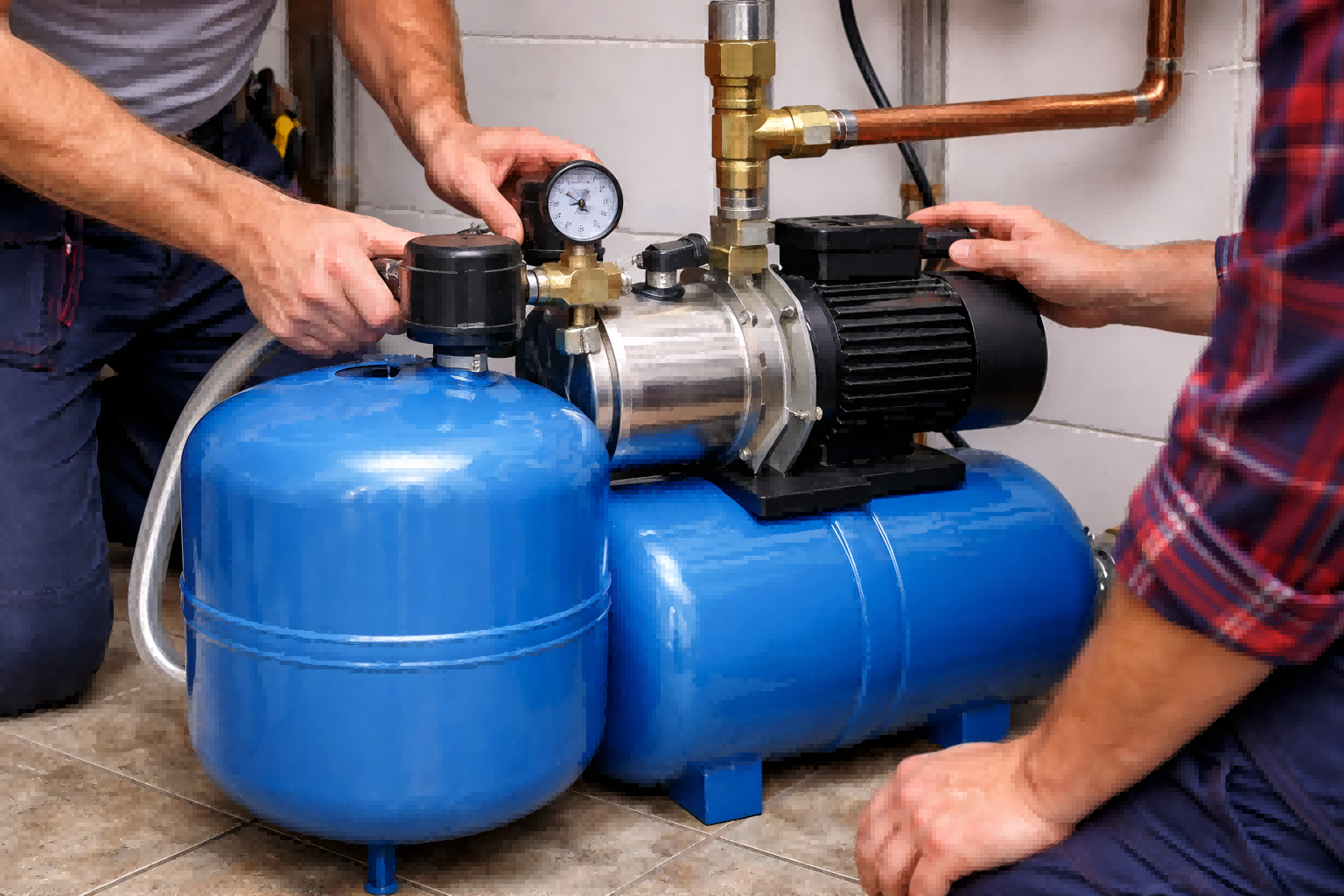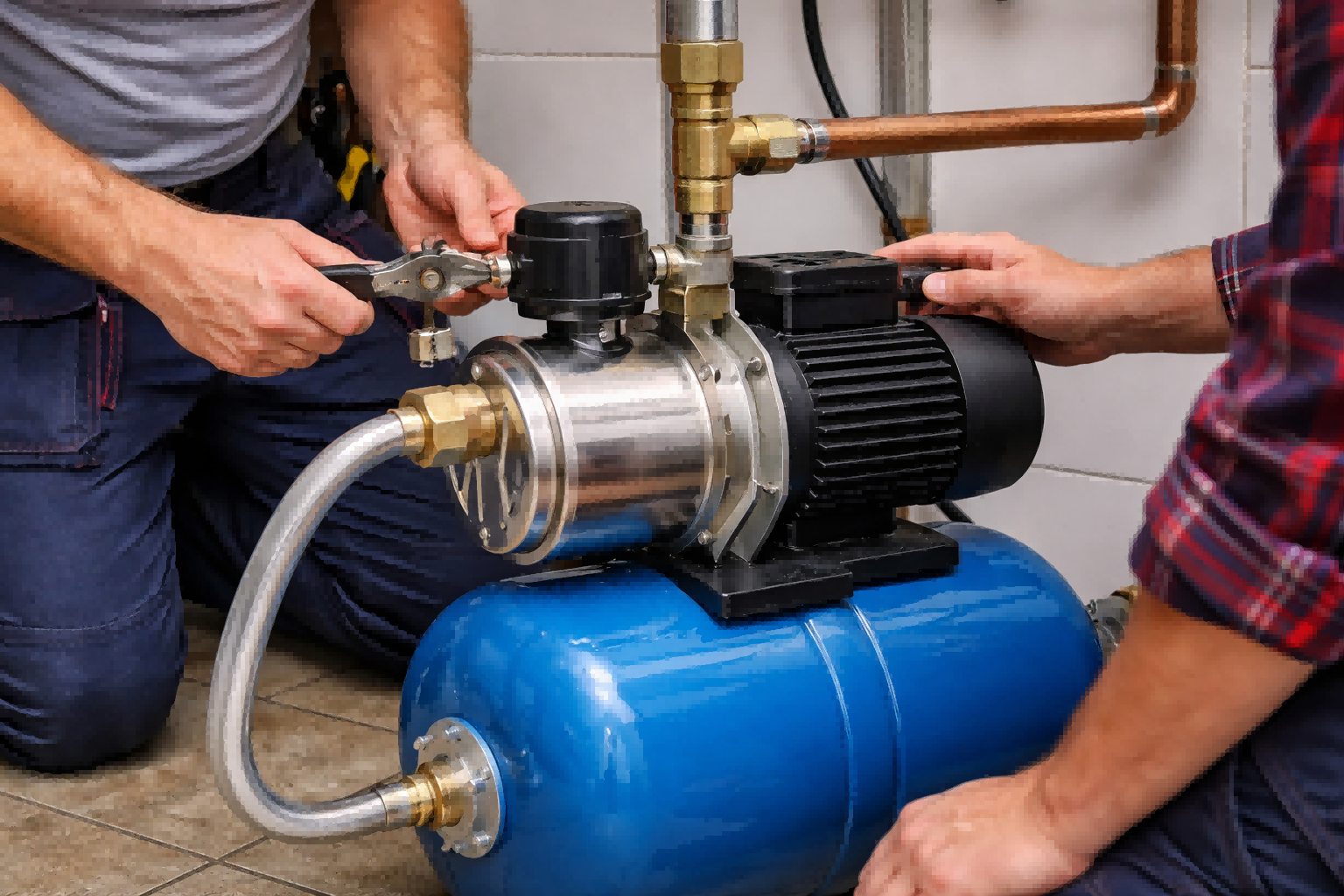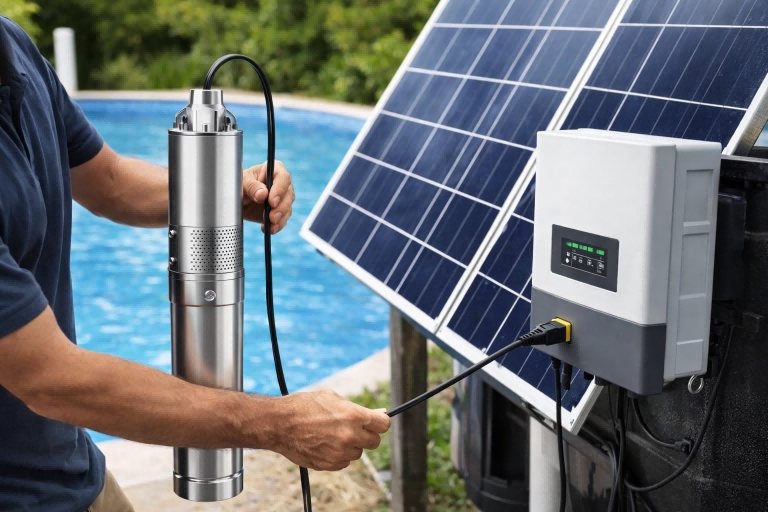Manually operating pumps is inefficient and risks costly equipment damage.
This lack of control leads to inconsistent water pressure and high energy bills.
An automated system is the key.
The best way to automate a water pump is by using an intelligent electronic controller or a Variable Frequency Drive (VFD). These systems automatically manage pump operation based on water demand, provide constant pressure, protect the pump from damage, and significantly reduce energy consumption.
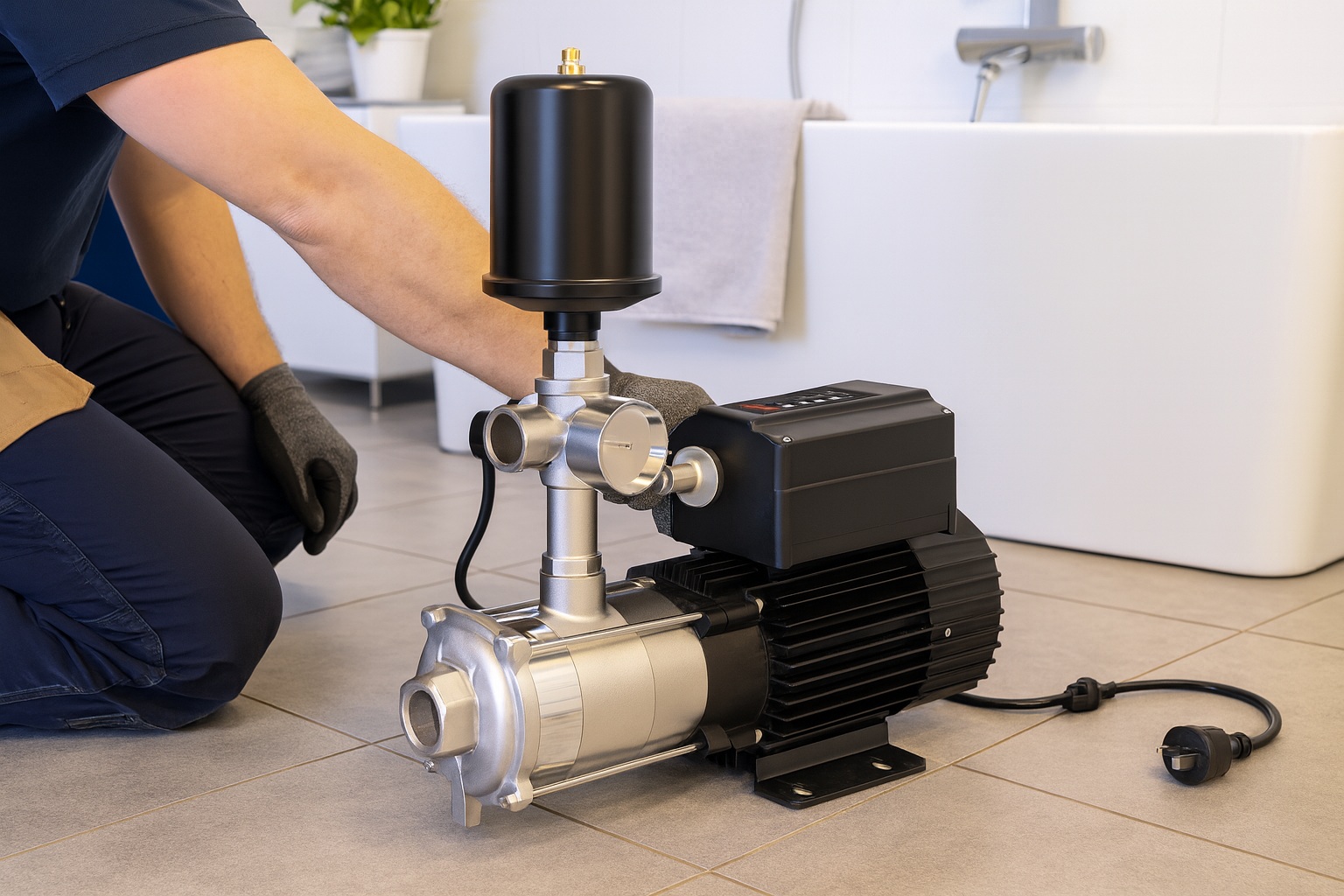
Choosing the right automation method is crucial for optimizing your water system.
The technology you select will directly impact performance, energy costs, and the lifespan of your pump.
A basic controller offers simple on/off functionality.
An advanced system provides a level of intelligence that transforms your entire water supply.
This guide explores the different automation methods available.
We will break down how each one works.
This will help you make an informed decision for reliable and efficient water management.
All-in-One Electronic Control Pumps
A traditional pump setup can be complex and bulky.
You need a separate pump, motor, pressure tank, and controller.
An all-in-one electronic control pump simplifies this by integrating all these components.
These pumps are compact, integrated units that include the pump, motor, pressure tank, and electronic controller. The controller automatically starts the pump when it detects water use and stops it when demand ends, providing reliable pressure without manual intervention.
An all-in-one pump provides a streamlined solution for boosting water pressure.
It's designed for simple installation and dependable, hands-off operation.
These units are perfect for residential and light commercial applications where space and simplicity are important.
The real value lies in the built-in intelligence that both manages performance and protects the hardware.
This integrated approach ensures all components work together seamlessly for optimal results.
Let's explore the core features that make these pumps so effective and reliable.
The Brains of the Operation: The Electronic Controller
The electronic controller is the central component that makes automation possible.
It constantly monitors the water system using a combination of sensors.
Typically, it uses a flow switch to detect when a tap is opened and a pressure switch to monitor the system's pressure.
When you open a faucet, the controller senses the flow and drop in pressure.
It immediately starts the pump to meet the demand.
Once you close the faucet, the flow stops and the pressure builds back up to a preset level.
The controller then signals the pump to shut down, saving energy.
Built-in Safety and Protection
A major advantage of these integrated systems is their self-preservation capabilities.
The electronic controller is programmed to recognize conditions that could harm the pump.
It acts as a constant watchdog, preventing damage from common operational hazards.
This built-in protection is essential for ensuring a long and reliable service life.
| Protection Feature | Trigger Condition | Pump Action |
|---|---|---|
| Dry Run Protection | No water is detected at the pump's inlet. | Shuts off the pump to prevent motor burnout. |
| Anti-Cycling | The pump starts and stops too frequently due to a small leak. | Pauses operation for a set time to protect the motor from wear. |
| Overheating Guard | The motor or electronics exceed a safe temperature. | Shuts off the pump to allow it to cool down. |
| Dead Head Protection | The pump runs against a closed valve or blockage. | Shuts off the pump to prevent damage from excessive pressure. |
These automatic safeguards make electronic control pumps a robust and dependable choice.
They deliver consistent pressure while actively protecting your investment.
Advanced Variable Frequency Drive (VFD) Pumps
Standard pumps operate at a single, fixed speed.
They are either fully on or completely off.
This can cause noticeable pressure fluctuations and inefficient energy use.
A Variable Frequency Drive (VFD) pump is the most advanced automation solution for perfect water pressure. It uses a smart controller to adjust the motor's speed in real time, delivering constant, stable pressure regardless of demand while maximizing energy savings.
VFD technology elevates a simple pump into a truly intelligent water management system.
It moves beyond the crude on/off logic of older systems.
Instead, it provides precisely the amount of power needed for any given moment.
This level of granular control offers unmatched benefits in performance, efficiency, and equipment longevity.
It is the gold standard for applications where stable pressure is not just a luxury, but a necessity.
Let's examine the core technology that makes this superior performance possible.
The Power of Constant Pressure
The hallmark of a VFD pump is its ability to maintain perfectly stable water pressure.
A pressure sensor in the pipeline provides continuous, real-time feedback to the VFD controller.
When you open a faucet, the pressure begins to drop.
The controller instantly detects this change.
It then signals the motor to increase its speed just enough to compensate and hold the pressure exactly at your set point.
If a second or third faucet is opened, the controller seamlessly increases the motor speed again.
When you close the taps, it smoothly reduces the motor's speed, often down to a gentle idle before stopping.
This process is so fluid that you never experience a pressure drop.
Your shower remains strong even when the washing machine starts.
Core Technology: The VFD and PMSM Advantage
The exceptional performance of these pumps comes from combining two key innovations.
-
Variable Frequency Drive (VFD): This is the intelligent controller that regulates the power delivered to the motor. By varying the electrical frequency, it can precisely control the motor's rotation speed (RPM) across a wide range. It enables crucial features like "soft start" and "soft stop," which gradually ramp the motor up and down. This eliminates the sudden jolt of a standard pump, preventing water hammer that can damage pipes and fixtures.
-
Permanent Magnet Synchronous Motor (PMSM): These advanced motors are far more efficient than traditional induction motors. They run cooler, generate less noise, and can achieve much higher speeds. The use of high-grade materials, such as advanced ferrite magnets, ensures they operate reliably even at high temperatures, contributing to a significantly longer lifespan.
Unmatched Energy Efficiency
A standard pump is like a light switch; it’s either all on or all off.
It runs at 100% power even if you only need 10% of its capacity.
This is incredibly wasteful.
A VFD pump is like a dimmer switch.
It only uses the exact amount of electricity required to meet the current water demand.
This intelligent power management can slash electricity consumption by up to 50% or more.
Over the life of the pump, this results in substantial cost savings.
It is a smarter, more economical, and more environmentally friendly approach to water pressure management.
How to Automate Your Pumping System
Manually controlling a pump is impractical and risky.
It requires constant supervision and leaves your equipment vulnerable to damage.
Automating your pump system is the modern solution for efficiency and protection.
Pump automation uses sensors and controllers to manage operations without human intervention. This can range from simple float switches in a tank to sophisticated VFD systems that maintain constant pressure. Automation is crucial for protecting the pump, saving energy, and ensuring a reliable water supply.
Automation is about much more than just convenience.
It is a vital strategy for protecting your investment and optimizing the performance of your entire water system.
An automated pump works smarter, not harder.
This leads directly to lower operating costs, greater reliability, and a significantly longer lifespan for your equipment.
An automated system can diagnose and react to problems in milliseconds.
Let's look at the different ways you can automate a pump and the critical protective benefits they provide.
Methods of Pump Automation
There are several ways to automate a pumping process.
The best method depends entirely on what you need the pump to do.
Whether you are filling a tank, boosting pressure, or dewatering a site, there is an automation solution.
-
Float Switches: This is the simplest type of automation. A buoyant switch rises and falls with the water level in a tank or sump pit. It physically trips the pump's power circuit to turn it on when the level is low and off when it's high. It is a time-tested and reliable solution for level control applications.
-
Pressure Switches: These devices are the backbone of traditional pressurized water systems. They monitor the pressure within a pipe and operate within a set range. For example, they might turn the pump on at 40 PSI and off at 60 PSI. They are typically used with a large pressure tank to buffer the pump's operation.
-
Electronic Controllers: These are more advanced than simple pressure switches. They combine pressure and flow sensors to provide more intelligent control. They are the standard in modern all-in-one booster pumps and often include a suite of built-in protective features.
-
Variable Frequency Drives (VFDs): This is the most advanced form of automation for pressure boosting. A VFD goes beyond simple on/off control. It continuously adjusts the pump's speed to precisely match water demand, providing perfectly constant pressure and the highest possible energy efficiency.
Why Automation is Crucial for Pump Protection
An unprotected pump is highly susceptible to damage from common operational problems.
Automation acts as a 24/7 guardian for your equipment.
The controller can detect harmful conditions far faster than any human operator.
This level of protection is essential for ensuring a long service life.
| Automation Feature | Protects Against | How It Works |
|---|---|---|
| Dry Run Protection | Motor Burnout & Seal Damage | Advanced systems use intelligent algorithms. They shut the pump off when no water is detected and perform periodic restart attempts to check if the water supply has returned. |
| Over/Under Voltage | Electrical Damage | The controller monitors the incoming power supply. It shuts the pump down if the voltage is too high or too low, protecting the sensitive motor and electronics. |
| Total Component Sealing | Moisture & Dust Damage | Top-tier controllers seal the main circuit board in a potting compound. This creates a waterproof and dustproof barrier (IP67 rated), preventing the most common cause of electronic failure. |
| Leak Detection | Water Waste & Pump Cycling | An intelligent controller can detect a small but continuous flow, indicating a potential leak in the plumbing. It can then alert the user and stop the pump from cycling unnecessarily. |
By automating your pump, you are not just adding convenience.
You are embedding layers of intelligent protection that ensure it runs safely and efficiently for years to come.
This drastically reduces the need for costly repairs and maximizes the return on your investment.
The Three Basic Types of Automatic Pump Controllers
Relying on a manual switch for your pump is an outdated practice.
It wastes energy, creates inconsistent pressure, and leaves your pump defenseless.
An automatic controller is the modern brain for any efficient pump system.
The three basic types of automatic pump controllers are float switches, pressure switches, and advanced electronic or VFD controllers. Float switches manage water levels, pressure switches maintain a pressure range, and electronic/VFD controllers offer the most intelligent, feature-rich control for modern systems.
Choosing the right controller is just as important as choosing the right pump.
The controller dictates how and when the pump operates.
Each type functions differently and is designed for specific tasks.
Understanding these three fundamental categories will help you select the best control strategy for your needs.
This ensures your system is not only effective but also protected and efficient for the long term.
1. Float Switch Controllers
This is the most common and straightforward type of controller used for managing water levels.
They are the go-to solution for applications like sump pumps and filling rainwater tanks.
How They Work
A float switch consists of a hollow, buoyant body that contains a mechanical switch.
It is connected to the pump's power supply by an electrical cord.
When the water level in a tank drops, the float hangs downward.
This closes the internal switch and turns the pump on.
As the tank fills with water, the float rises.
Once it reaches a certain angle, the switch tilts open, cutting power and turning the pump off.
Best For:
- Sump pits for basement dewatering.
- Filling and maintaining water levels in storage tanks.
- Wastewater and sewage pump applications.
They are simple, inexpensive, and generally very reliable for basic liquid level control tasks.
2. Pressure Switch Controllers
These controllers are the traditional standard for well pumps and older pressure-boosting systems.
Their sole job is to maintain water pressure within a predefined range.
How They Work
A pressure switch uses a spring-loaded diaphragm to physically sense the system's water pressure.
It has two adjustable set points: a lower "cut-in" pressure and a higher "cut-out" pressure.
When you use water, the pressure in the system falls.
Once it reaches the cut-in point (e.g., 40 PSI), the switch contacts close and start the pump.
The pump runs at full speed, building pressure back up.
When the pressure hits the cut-out point (e.g., 60 PSI), the switch contacts open and stop the pump.
They are almost always used with a large pressure tank to prevent the pump from starting and stopping too frequently.
Best For:
- Residential well water systems.
- Irrigation systems that need pressure but not perfect stability.
- Simple booster pump setups paired with a large external pressure tank.
3. Electronic and VFD Controllers
This category represents the pinnacle of modern pump control technology.
It includes the integrated controllers found in all-in-one pumps and standalone VFDs.
How They Work
Instead of relying on simple mechanical switches, these controllers use advanced electronic sensors.
They monitor a wide range of parameters in real-time, including pressure, flow, temperature, and voltage.
This allows for far more sophisticated and precise control.
A VFD controller, for example, can provide perfectly constant pressure by modulating the pump's speed, rather than just using the crude on/off method of a pressure switch.
They integrate a comprehensive suite of protective features directly into the unit.
This includes sophisticated dry-run protection with auto-reset timers and warnings for pipeline leaks.
Controller Feature Comparison:
| Feature | Float Switch | Pressure Switch | Electronic / VFD Controller |
|---|---|---|---|
| Primary Function | Liquid Level Control | Pressure Range Control | Constant Pressure & Total System Management |
| Energy Savings | None | Minimal | Very High |
| Pump Protection | None | Very Basic | Comprehensive & Intelligent |
| User Interface | None | Mechanical Adjustment | Digital Display with Real-Time Data |
These advanced controllers deliver the highest levels of performance, protection, and efficiency.
They are the definitive choice for modern residential, commercial, and industrial pressure-boosting applications where reliability and precision are paramount.
Conclusion
Automating your water pump with an intelligent controller is the best way to ensure reliable performance, superior protection, and maximum energy efficiency for your entire water system.
FAQs
What are the 3 types of pump control?
The three main types are float switches for level control, pressure switches for maintaining a pressure range, and electronic/VFD controllers for intelligent system management and constant pressure.
How do you automate a water pump to a tank?
The simplest way is with a float switch. The switch is placed in the tank and wired to the pump, automatically turning it on when the water level is low.
What is an automatic pump controller switch?
It's a device that automates a pump's operation. It uses sensors for pressure, flow, or water level to turn the pump on and off without manual intervention.
Do I need a pressure tank with an automatic pump controller?
Many modern electronic controllers have a small internal tank to reduce cycling. VFD controllers provide constant pressure and typically do not require a large external pressure tank.
Can pump automation save money?
Yes, significantly. Advanced automation like VFDs can reduce a pump's energy consumption by up to 50% by matching motor speed to real-time water demand.
What is the most common pump failure?
One of the most common failures is motor burnout or mechanical seal damage caused by dry running, which is when the pump operates without water.
How does dry run protection work?
Intelligent controllers detect the absence of water and shut the pump off. Advanced systems will then attempt to restart automatically after set intervals to check if water has returned.


